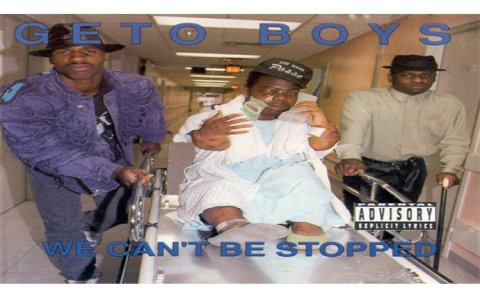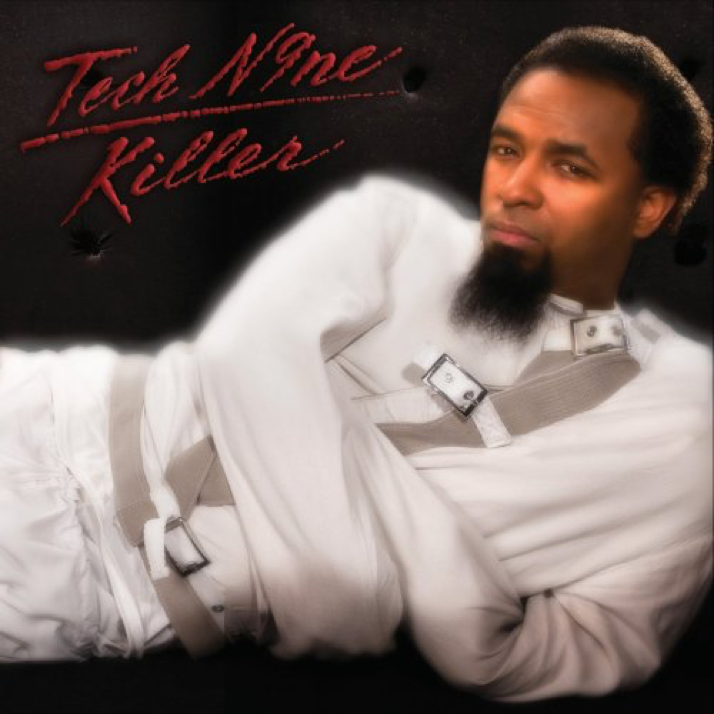
By Alvin Benjamin Carter III
Originally Published on November 16, 2009
All Hollow's Eve, or Halloween - a day that many do not necessarily associate with hiphop - has become one of the most celebrated customs in the U.S. The link between this pseudo-holiday and hiphop is actually stronger than most might think. Hiphop has many subgenres that differ in flavor and content, but one subgenre that pushes the envelope to the edge of the cliff is horrorcore.
Horrorcore rap is defined in Alanzo Westbrook's dictionary of hiphop terminology as "rap with themes of horror, dead bodies, funerals, tombs, etc." What is not included in the definition is how it has become a subculture with its own swag, slang, and celebrations.
The origins of horrorcore can be traced back to concept performance acts like Parliament Funkadelic, Afrika Bambaataa and Alice Cooper, whose music often uses themes involving outer space and unearthly creatures. The actual hiphop subgenre is widely regarded as kicking off with “Assasins” by Geto Boys from their 1988 debut album Making Trouble, prior to Scarface and Willie D joining the group. Horrorcore reached new heights with the 1991 release of the Geto Boys' fourth album, We Can't Be Stopped. The album cover features Geto Boys member Bushwick Bill being rushed down a hospital hallway after a botched suicide attempt. Sadly, the event depicted was not complete fiction. Bushwick did lose his eye in this manner, and he was really in the hospital when the picture was taken. Songs from the album also referenced the reality of street life with imagery often found in horror movies.
By 1992 there was an underground movement growing in New York that was led by the RZA’z Gravediggaz and the short-lived Flatlinerz. Texas also had a major player in Ganksta NIP, but the Midwest scene proves dominant to this day.
Even before We Can't Be Stopped, other soon-to-be horrorcore artists started taking cues from Bushwick Bill and his crew's earlier works. The Geto Boys influenced Detroit rapper Esham's self-released first album, Boomin’ Words from Hell (1989). This album kicked off a menacing career where bizarre and demonic behavior gave way to the larger Detroit scene, which would eventually become the home of horrorcore.
This Detroit scene still thrives slightly under the radar, and even influences mainstream artists such as Eminem. In a line from Eminem's "Still Don't Give A..." he claims to be "a cross between Manson, Esham, and Ozzy." This line gives you an idea of where Esham is placed in eyes of horrorcore fans, and it provides insight on how Eminem can be part of the rap group D12 and write songs like "3AM" and "Kim." While Eminem does not claim to be a horrorcore artist, others like Detroit’s Insane Clown Posse embrace the dark scene with arms wide open.
While their lyrics fall short of some of the satanic imagery that other genre mates use, the Insane Clown Posse (ICP) has carved out a concept career that shocks audiences all the same. Violent J and Shaggy 2 Dope have been releasing music since 1992 as the face painted Insane Clown Posse. This act has created a movement that has spawned new slang and a clownish sense of fashion that reaches far beyond their hometown of Detriot, Michigan. Fans of ICP are called "juggalos" or "juggalettes." Fans paint their faces like clowns, and they see the clownish duo of ICP as dark prophets. The juggalos' clownish activities extend far beyond October 31. True fans might have their face painted just because they feel like representing ICP that day. Juggalos' loyalty even goes as far as their choice of soft drink. Faygo is a Detriot soda brand that became a signature Juggalo drink just because ICP brings it to shows.
Each year ICP hosts a multi-day celebration called the Gathering of the Juggalos. This year's festival featured the ICP's Wrestling Federation, dance parties, and performances from more mainstream acts such as Ice Cube and Scarface. The event is seen as a chance for fans to fully immerse themselves in the horrorcore scene. The shared slang references to horror and comically morbid fashion help foster a dark sense of community.
Detroit is not the only place still holding down this ghoulish hiphop offshoot. New York has its own cast of current horrorcore artists that have been in the game since the genre's inception. New York rapper Kool Keith (a.k.a Dr. Octagon, a.k.a Dr. Doom) even claims to be the creator of the genre.
The more notable New York artists are Ill Bill, Necro, and Mr. Hyde. These three artists run in various crews from La Coka Nostra to the Circle of Tyrants. These crews extenuate the street mentality of the genre in a way that differs from their Detroit counterparts. The imagery is less playful and more in-your-face. Many of New York's horrorcore artists tend to focus on gore and misogyny (google "Necro (rapper)" at your own risk) in an effort that to appear ruthless, or to use a throwback term, gangster.
This genre has received a lot of criticism, and it was linked to a violent crime in Virginia in 2009. Syko Sam, a then twenty-year-old aspiring horrorcore artist, was the main suspect and later sentenced to life in prison in a quadruple murder case. The teen's favorite artist, Mars, appealed to the nation in a CBS News interview claiming horrorcore is just entertainment. When questioned about his responsibility in making this kind of music Mars stated his responsibility is to make the best and most shocking music possible. He structured his argument around the fact that the media does not jump to question Stephen King about his horrific creativity every time someone commits a murder.
Not all members of this subgenre take on a hellish persona. San Antonio's The Vultures keep the rhymes brutal and their fashion Karmaloop.com. The scary imagery used in their elastic rhymes serves more as boasting platform than a call to participate in the dark subculture. Not everyone one can be like T.I. - rap about the game and actually go to jail - but horrorcore artists can take their extremely twisted thoughts and come across just as tough as any OG. Well, that is what they would have you think anyway.
Rapping about horror may seem like a cop-out to some listeners because an artist can just insert scary imagery when they run out on meaningful things to say. It also allows for shock marketing with the use of extreme album cover imagery that often promotes sales through controversy. One of the best horrorcore album covers is actually Tech N9ne's playful parody of Michael Jackson's Thriller.

All gimmicks aside, this subgenre's ability to thrive is commendable. A number of artists and producers have found their niche in the underworld of hiphop. I am not a fan of horrorcore, but I do find it interesting that a Geto Boys' album spawned a market that continues to grow without the help of mainstream media. That alone makes this style of music worthy of notice at least once a year, and October 31 seems like a fitting date to recognize horrorcore.
